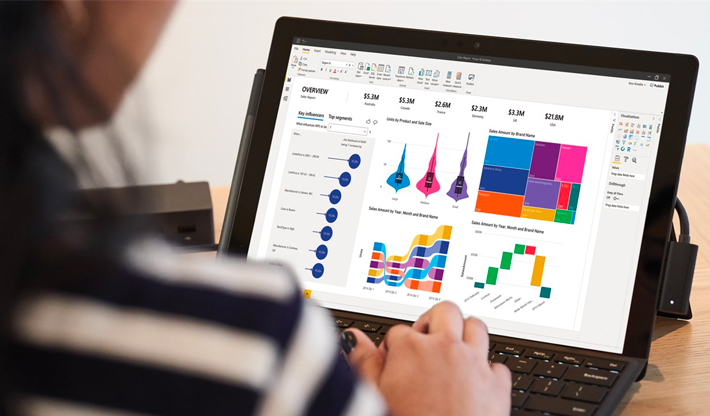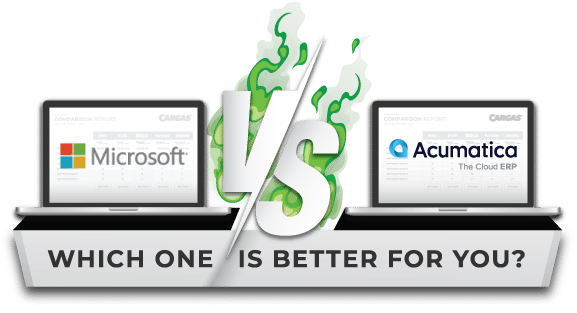ARTICLE | 5 MIN READ
The Benefits of Using Power BI with Dynamics 365 CRM
What is Power BI, and how can you pair it with your Microsoft solutions?

To make informed decisions that improve sales and profitability, you need data-driven insights from streamlined sources. The combined capabilities of Microsoft Power BI and Microsoft Dynamics 365 CRM help you support your sales team and drill down into data.
What is Microsoft Power BI?
Power BI is a cloud-based business intelligence tool by Microsoft. It consolidates data from different sources into one platform. Then, it lets you use that data to create reports and dashboards that visualize what’s happening with your business.
Power BI consolidates data across different sources and software programs, even if the programs aren’t integrated. For example, you can pull sales data from Dynamics 365 CRM and financial data from an accounting system like Sage Intacct, then merge all of that data into a sales management dashboard. Here’s a complete list of all the data sources Power BI can connect to. Or, for a more in-depth look at Power BI’s features, check out our quick demo:
The Benefits of Using Power BI with Dynamics 365 CRM
At Cargas, we find that many of our customers are happy with the native reporting capabilities of Dynamics 365 CRM. However, by adding a reporting layer that goes beyond the limits of Dynamics 365 CRM’s Advanced Find feature, Power BI extends what you can learn about your sales performance and offers numerous benefits to your team.
Advantages of using Power BI for Sales
- Connects to almost any data source and consolidates sales data in one central place, such as CRM quotation data and ERP sales data
- Presents data in easy-to-understand visual formats such as charts and graphs
- Provides pre-built dashboards, reports, and data models with the flexibility to create your own using custom fields and embed charts directly into your CRM
- Allows you to embed the visuals and apps you create into your software
- Displays sales data trends over time to improve forecasting and adjust your strategies
- Makes it easy to share dashboards and other meaningful insights with team members across your organization, including executives, finance, and operations
- Offers a mobile app with on-the-go access to Power BI reports, graphs, and charts
- Lets you easily filter data to view customers, categories, business units, products, and industries
If you’re already a Dynamics 365 Sales user, your subscription includes Power BI Pro, so you can start taking advantage of these benefits immediately.

Powerful Potential for Sales Managers
Power BI offers tremendous potential for small to mid-size companies that don’t need an extensive or expensive enterprise-level business intelligence solution.
Power BI’s customer account summaries and opportunity trending reports can be especially helpful. Besides tracking leads and sales opportunities, you have the ability to monitor customer KPIs, sales revenue, auto-renews, and contact history (year-to-date, month-to-date, or for whatever time period you wish). Power BI lets you build custom filters, search data by date range, and compare metrics over time.
Cargas’s sales team uses Power BI to see a consolidated summary of sales wins and losses year-to-date. We also track lead volume by product over time to identify downward or upward trends so we can adjust our sales and marketing activities accordingly. In addition, we use a service bookings pipeline report to readily see all scheduled customer work that’s in the queue.
What really makes this information powerful is the ability to see it conveniently in our Dynamics CRM dashboards. These are just a few real-life examples of how Power BI enhances the value of Dynamics 365 CRM’s reporting capabilities at Cargas.

Let’s Chat
Still have questions? Get in touch with our expert team of software professionals.


